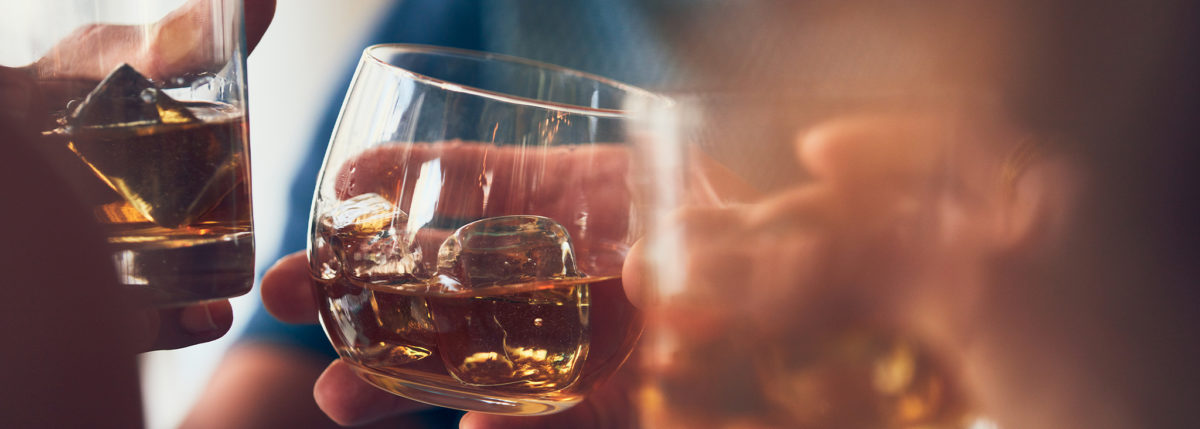Why Glucagon Might Not Work with Alcohol
Editor’s Note: This content has been verified by Marina Basina, MD, a clinical associate professor at Stanford University. She’s a clinical endocrinologist and researcher with a focus on diabetes management and diabetes technology. Dr. Basina is an active member of multiple medical advisory boards and community diabetes organizations, and she is on the Beyond Type 1 Science Advisory Council.
You may have heard that glucagon is ineffective in treating low blood sugar when you’re drinking. But why doesn’t glucagon work with alcohol? Turns out, there are actual biological processes that prevent glucagon from being effective when you’re ingesting alcohol. Understanding what those processes are can help you can do to take control of the situation.
How do we process alcohol?
First, let’s do a little refresher on how bodies process alcohol. When you drink, your body sees alcohol as a poison, and assigns your liver the task of “detoxing” your body of that poison. Each alcoholic beverage takes one to one-and-a-half hours for the liver to process. Unfortunately, this means that the liver can’t do it’s main job as effectively; regulating blood glucose levels (BGLs) by steadily converting glycogen stores into glucose and releasing that glucose into your bloodstream. Because of this, drinking alcohol can put your BGLs out of whack, often putting you at risk of hypoglycemia or a “hypo.”
“There are recommendations on the safe amount of ethanol (alcohol) for male and female (below),” says endocrinologist Marina Basina, “but there is no specific threshold of alcohol above which glucagon is ineffective. It depends on individual saturation of the enzyme.”
“Regular consumption of small quantities is safer than binge drinking,” says Basina, MD.
What are the “safe” limits for alcohol?
- For men: 2-3 units per day
- For women: 1-2 units per day
- 1 unit = 8 – 10 grams of ethanol
What is considered “binge” drinking?
- For men: 8 units in a day
- For women: 6 units in a day
- 1 unit = 8 – 10 grams of ethanol
Know the other risks of drinking with diabetes.
How does Glucagon work?
Glucagon is a hormone that is produced by your pancreas, and its job is to raise blood glucose levels (BGLs). In someone with a fully functional pancreas, the body releases this hormone in response to low BGLs and 1. Tells the liver to break down glycogen, 2. Activates gluconeogenesis, or 3. Breaks down stored fat into fatty acids.
With type 1 diabetes, elevated levels of circulating insulin can stop the pancreas from naturally releasing glucagon, elevating your risk of a hypo.
If you are conscious but cannot consume sugar orally, you can self-administer glucagon. If you are unconscious, someone else will need to inject it into your muscle, or in the case of nasal glucagon BAQSIMI, spray it into your nostril. Doctors may give an injection if you are hospitalized. Always contact emergency services if glucagon is administered in an emergency situation.
Read more about glucagon and how to use it.
Why doesn’t glucagon protect me from a hypo when I’m drinking?
The main way that glucagon corrects low BGLs is by stimulating the liver to break down glycogen. But, as we discussed above, when you are drinking, your liver’s job is to detox your body of alcohol. Instead of acting on the signals that the glucagon is giving to produce more glucose, it continues to break down the alcohol in your system, rendering the administered glucagon virtually useless.
So … what do I do to protect myself from a hypo when I’m drinking?
If you do find yourself at risk for a hypo while you are drinking, correct by getting some fast-acting carbs into your system: some juice, soda, a snack, etc. A quick list of things that you can do to protect yourself from a hypo when you are drinking are to:
- Don’t drink on an empty stomach.
- Keep track of the alcohol you are drinking.
- Keep testing your BGLs and adjusting accordingly.
- If you do go low, eat a fast-acting carb.
- Eat a carb-containing snack before going to bed.
Before you drink alcohol, make sure that you know the risks with diabetes and that you are doing so in a health-conscious way.
Return to Beyond Type 1’s Alcohol and Diabetes Guide.





